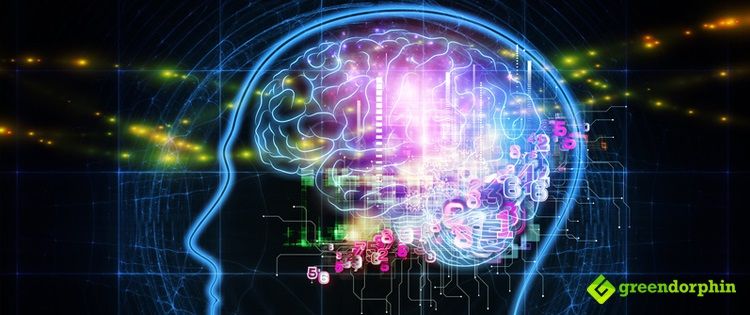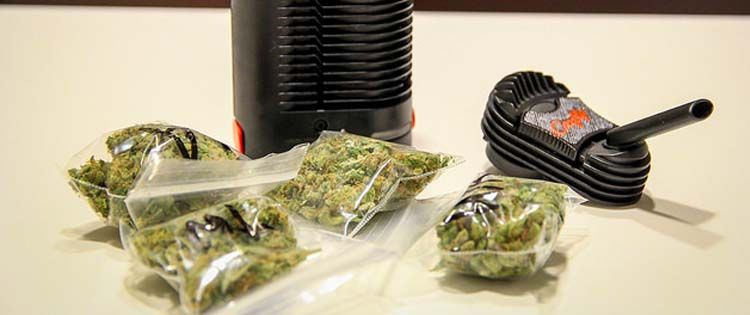Even novice cannabis users know that cannabis tolerance builds up quickly. Take a few puffs on a joint the first time and a week later, you usually have to smoke a little more to get the same psychoactive effect.
Regular users also find that there is a pronounced connection to how much you consume and the need to consume more over time to continue feeling the same intensity of psychoactive impact. Not only that, but a brief cessation of consumption will also reverse this blunted impact.
Marijuana is not considered “addictive”, but clearly the body acts differently to THC depending on the amount and frequency of use.
What is going on?
The Impact on and of the CB1 Receptor

There are two kinds of cannabinoid receptors in the human body. CB1 receptors, which are found in the human brain, are apparently where cannabis tolerance is created. Regular consumption of THC desensitizes this receptor over time. However, recent studies also seem to suggest that sensors may be more or less resistant to tolerance depending on where they are located. Some functions in the gut, for example, appear to be less sensitive than in other areas of the body.
However, in general, over time, according to the few studies on the subject, THC ingestion decreases the amount of CB1 receptors expressed in cells. This is called “downregulation.” When cells downregulate the number of CB1, the body and then brain then “tolerate” or require higher levels of THC to achieve the same effect.
Cannabis Tolerance Does Not Last
The good news, particularly for those who use marijuana for the psychedelic impact rather than other purposes, is that THC tolerance does not last. Most users find that abstaining for a period of even a couple of days makes an impact on effectiveness. At even the 28-day mark, sensitivity via abstinence continues to increase.

This means that for most patients, a brief drug holiday is all they need to re-amp certain kinds of effects.
This is also why, however, different methods for ingestion, including micro-dosing are starting to become so widely popular. With micro-dosing, users don’t tend to feel the psychoactive effect in the first place. This is also a helpful strategy for lowering the overall amount of cannabis used on a regular basis.
Micro-dosing is not as effective in stimulating CB1 upregulation as complete abstinence.
Some users also find that a brief switch to CBD only can help desensitize them to THC.
Other issues like body weight and metabolism also affect the impact of cannabis as well as THC sensitivity and tolerance over time on an individual user. So does the strength (or concentration of THC) of and in the cannabis used.

Gender also appears to impact both THC impact and sensitivity. Women tend to react differently to THC than men. The limited and preliminary studies that have been performed to date on this issue seem to suggest that women also build up a tolerance to THC more quickly than men.
Does This Mean That Cannabis Is Actually “Addictive?”
The answer to that question is a straightforward “no.” However, because of cannabinoids in general and THC, in particular, are drugs that affect central mood and metabolic processing, those who use it regularly will notice a distinct physical and mental impact when they stop using the drug.
THC helps regulate and has an overall impact on mood, memory, movement, sleep, and the reward system. After a long term period of regular THC ingestion, particularly given that CB1 sensitivity is impacted throughout the body, regular users who take a break will clearly “feel” it.

Most often, the short-term impact includes a slight increase in irritability and sleeplessness. However, these impacts also wear off, presumably as the body’s natural CB1 sensitivity returns.
Ingesting more Omega-3 oils (either via food or supplements) has been found to lessen many of the cessation symptoms experienced by regular users. That said, to date, there is no research on how or why this might impact users.
Are The Issues The Same For Recreational and Medical Users?
Both medical and recreational users are impacted by CB1 downregulation, but what has not been studied at all to date, are the longer term impacts of THC tolerance on psychoactive impact (i.e. the ability to cause a “high”) vs. the other impacts of the drug. THC, for example, tends to work better on some medical conditions like chronic pain than other cannabinoids. As the body builds up a tolerance to the psychoactive impact of the drug, however, the impact on other medical symptoms is unknown.
Clearly, this will continue to be an area of intense interest and study.
How does cannabis tolerance build up in your body based on your own experience?
Share your story with our community in the comment section below.
- Guenter Weiglein – The Persevering Patient - July 7, 2017
- Dr Peace – A German Cannabis Doctor On The Go - July 5, 2017
- The German Marijuana Edibles Market - July 3, 2017


